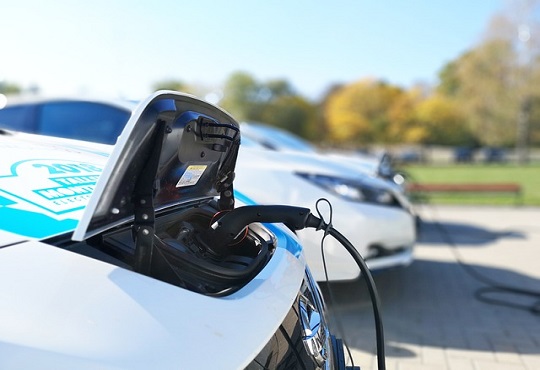Stellantis Inks MoU with Orano For EV Battery Recycling Agreement
CIOTechOutlook Team | Wednesday, 25 October 2023, 02:47 IST
 Stellantis N.V. and Orano signed a memorandum of understanding to form a joint venture to recycle end-of-life electric vehicle batteries and scrap from gigafactories in Enlarged Europe and North America, strengthening Stellantis' position in the electric-vehicle battery value chain by securing additional access to cobalt, nickel, and lithium required for electrification and energy transition.
Stellantis N.V. and Orano signed a memorandum of understanding to form a joint venture to recycle end-of-life electric vehicle batteries and scrap from gigafactories in Enlarged Europe and North America, strengthening Stellantis' position in the electric-vehicle battery value chain by securing additional access to cobalt, nickel, and lithium required for electrification and energy transition.
“The United Nations’ Sustainable Development Goals has confirmed the need to find solutions like this one with Orano to meet the challenge of natural resource scarcity and sustainability,” said Stellantis Senior Vice President, Circular Economy Business Unit Alison Jones. “Guided by our Dare Forward 2030 strategic plan, Stellantis is committed to shifting its production and consumption model by fulfilling its circular economy commitment.”
The joint venture capitalizes on Orano’s innovative, low-carbon technology, which breaks with existing processes, allowing the recovery of all materials from lithium-ion batteries, and the manufacturing of new cathode materials. The joint venture will produce materials also known as “black mass” or “active mass.” This can be refined in Orano’s hydrometallurgical plant to be built in Dunkirk, France so that the materials could be re-used in batteries, thus closing the loop of a circular economy, as per business wire.
Metal recovery rates can reach remarkable levels of more than 90% because to its novel pre-treatment method and cutting-edge hydrometallurgy technology. It enables OEMs to meet European Commission recycling rates for electric car batteries and maintain the business model's long-term viability. Orano presents itself as a significant actor in the entire value chain, from battery recycling to the manufacturing of cathode materials, in the context of growing demand for critical metals and Europe's strong reliance on those metals.
























































.jpg)
.jpg)








.jpg)

.jpg)

.jpg)
.jpg)



.jpg)


.jpg)





























.jpg)

.jpg)
.jpg)

.jpg)
.jpg)

































.jpg)

.jpg)



















.jpg)
















.jpg)












































































































